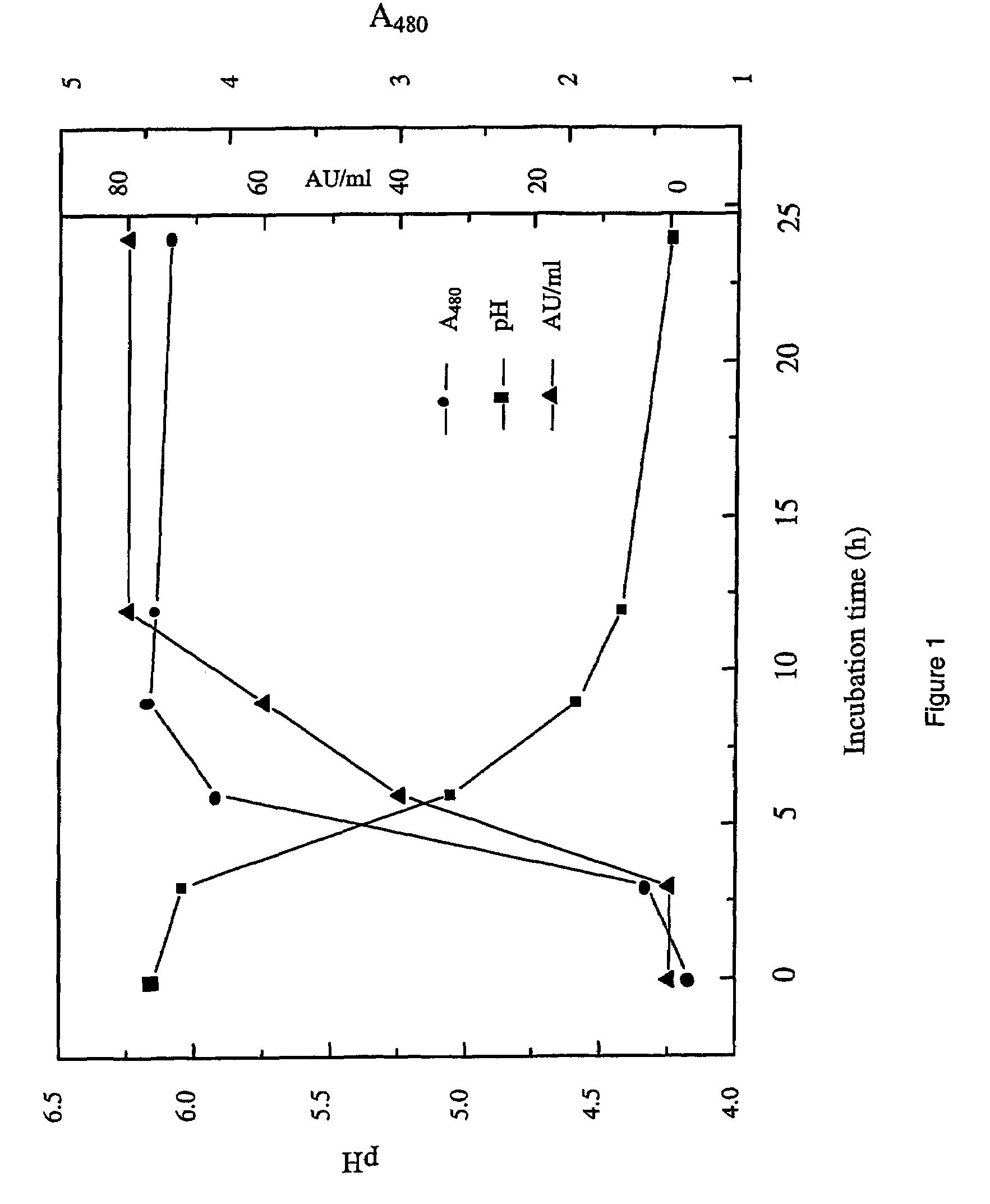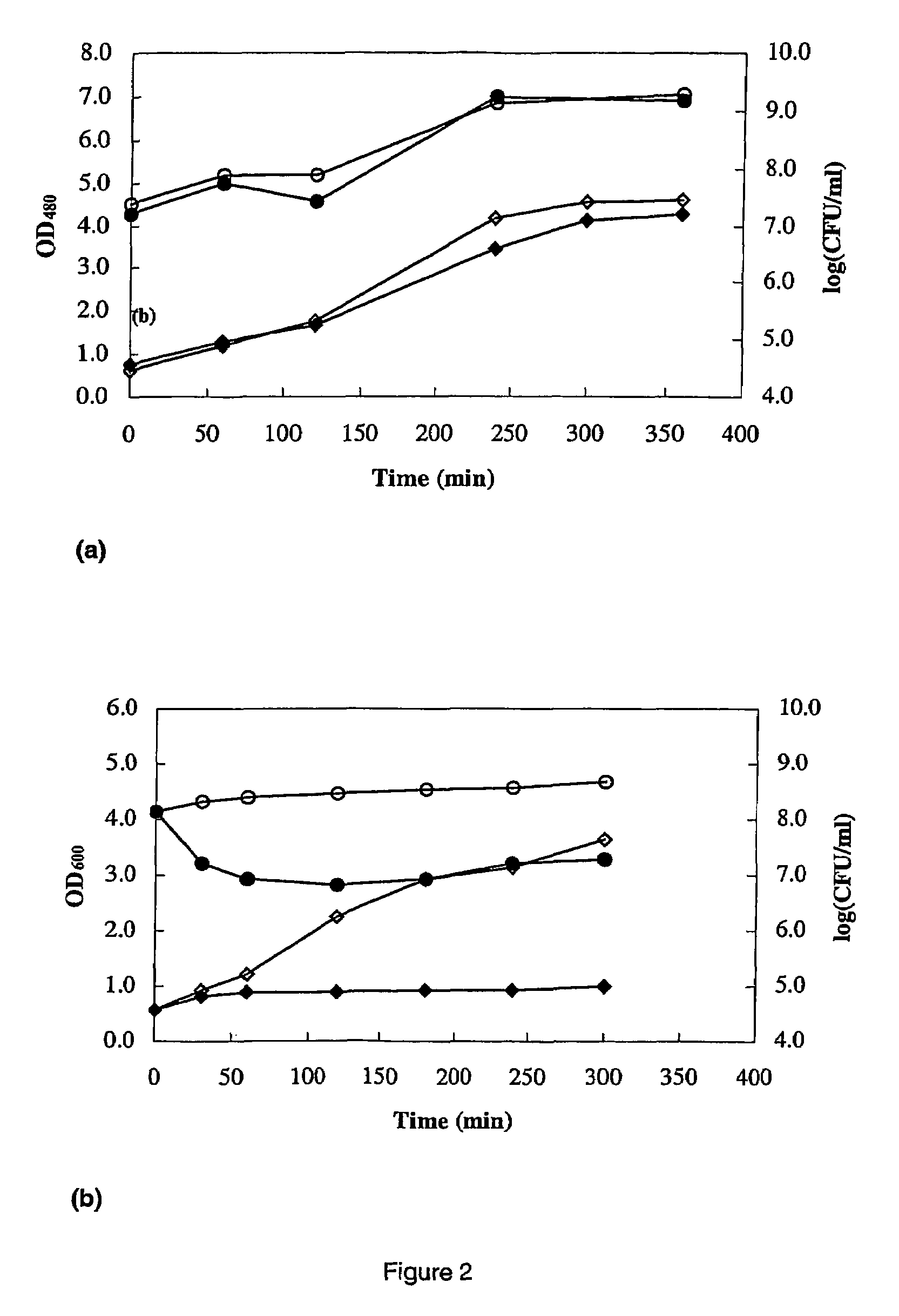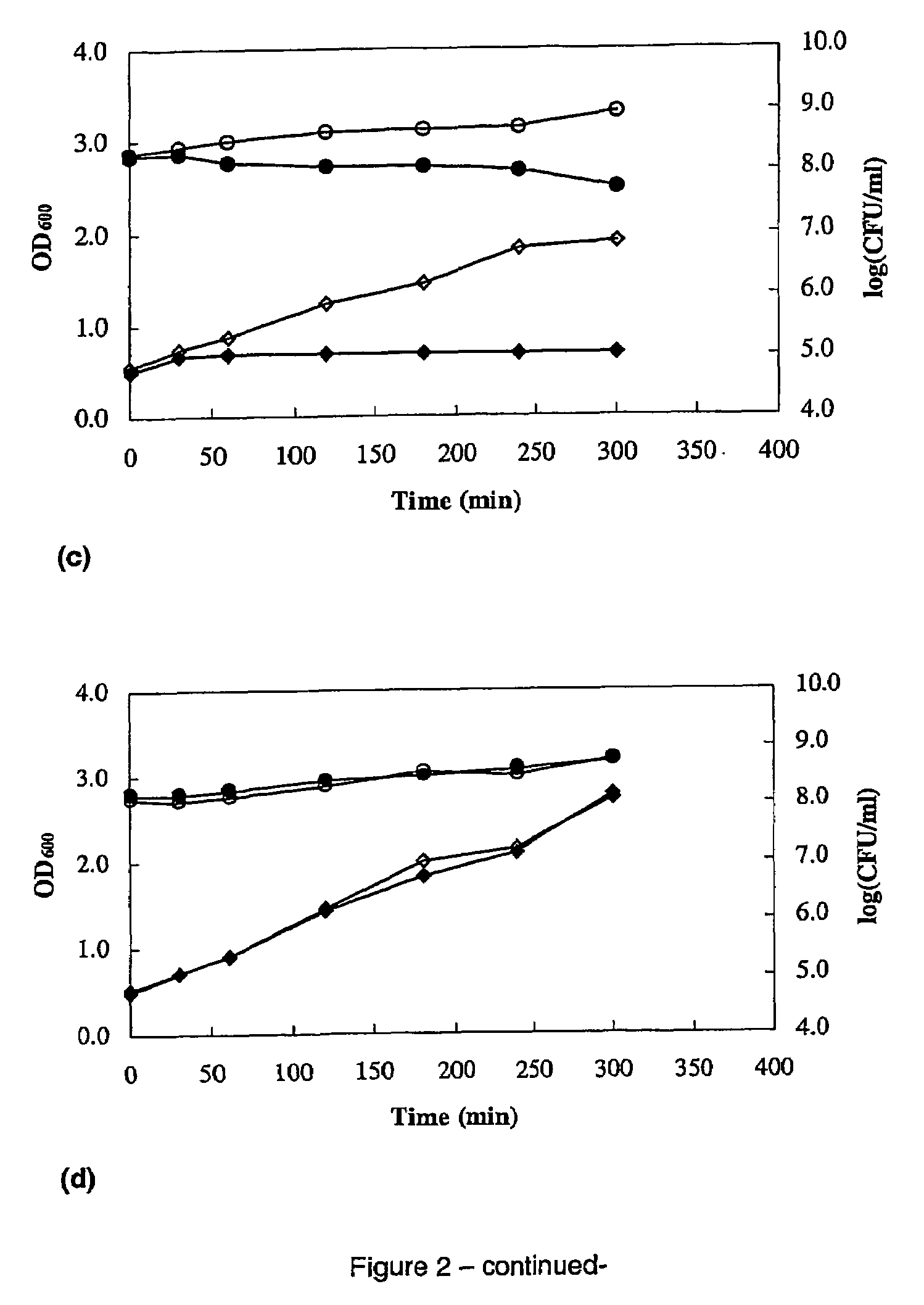Method of producing macedocin by culturing Streptococcus macedonicus
a technology of streptococcus macedonicus and macedocin, which is applied in the direction of biocide, peptide/protein ingredients, and bacteria-based processes, etc., can solve the problems of restricted commercial use of bacteriocins to da
- Summary
- Abstract
- Description
- Claims
- Application Information
AI Technical Summary
Benefits of technology
Problems solved by technology
Method used
Image
Examples
example 1
Materials and Methods
Strain and Growth Conditions.
[0102]S. macedonicus ACA-DC 198, a strain isolated from Greek Kasseri cheese, was obtained from the ACA-DC Collection of the Laboratory of Dairy Research at the Agricultural University of Athens, Athens, Greece. It was stored at −30° C. in sterile skim milk (10%, wt / vol; Irish Dairy Bord, Dublin, Ireland). Before experimental use, the strain was subcultured twice (inoculum of 1%, vol / vol) in sterile milk, containing yeast extract (0.3%, wt / vol; Merck, Darmstadt, Germany), at 37° C. for 24 h, unless stated otherwise, to obtain fresh cultures. Final growth was performed in the latter medium under the same conditions. Growth was assessed by measurement of the pH and the optical density at 480 nm (Kanasaki et al. 1975). Sterilisation was performed by autoclaving (2.1 atm) at 121° C. for 20 min.
Protein Determination
[0103]Protein concentrations were determined according to the method of Lowry et al. (1951) with bovine serum albumin as a st...
example 2
Inhibitory Spectrum and Mode of Inhibition
Strains and Methods
[0107]The bacterial strains used as indicator organisms and their growth conditions are listed in Table 1. The antagonistic activity of S. macedonicus ACA-DC 198 was tested by the soft agar assay or the well diffusion assay (Clostridium strains) as described above, except that only cell-free culture supernatant and the fraction obtained through ammonium sulfate precipitation (50% saturatation) were tested (no dilutions made). For each indicator strain the respective solid medium was used. Solid media were prepared by adding 1.5% (wt / vol) of granulated agar (Oxoid) to the respective broth media. Overlay agar was prepared by the addition of 0.75% (wt / vol) of granulated agar (Oxoid).
[0108]To investigate its mode of inhibition, partially purified bacteriocin was obtained according to the two-step procedure of De Vuyst et al. (1996) except that 500 ml of skim milk (10%, wt / vol) containing yeast extract (0.3%, wt / vol), inoculate...
example 3
Purification and Characterization of the Streptococcus macedonicus Bacteriocin
Purification
[0119]All the purification steps were performed at room temperature, using an FPLC system of Waters (WATERS™ 650E Advanced Protein Purification System). All columns used were purchased from Pharmacia-LKB (Uppsala, Sweden).
[0120]A combination of ammonium sulfate precipitation, anion- and cation-exchange chromatography, reverse-phase chromatography, and gel filtration has been applied for the purification of the bacteriocin to homogeneity as follows:
[0121]Skim milk (500 ml), supplemented with yeast extract (0.3%, wt / vol.), was inoculated with S. macedonicus ACA-DC 198 (inoculum of 1%, vol. / vol.), and incubated at 37° C. for 24 h. The cells were removed by centrifugation at 15 000 g at 4° C. for 30 min. The supernatant was adjusted to pH 6.5 by 5 N NaOH, and saturated up to 50% with (NH4)2SO4. After overnight stirring at 4° C., the bacteriocin was pelleted by centrifugation at 15 000 g at 4° C. fo...
PUM
| Property | Measurement | Unit |
|---|---|---|
| pH | aaaaa | aaaaa |
| pH | aaaaa | aaaaa |
| pH | aaaaa | aaaaa |
Abstract
Description
Claims
Application Information
 Login to View More
Login to View More - R&D
- Intellectual Property
- Life Sciences
- Materials
- Tech Scout
- Unparalleled Data Quality
- Higher Quality Content
- 60% Fewer Hallucinations
Browse by: Latest US Patents, China's latest patents, Technical Efficacy Thesaurus, Application Domain, Technology Topic, Popular Technical Reports.
© 2025 PatSnap. All rights reserved.Legal|Privacy policy|Modern Slavery Act Transparency Statement|Sitemap|About US| Contact US: help@patsnap.com



